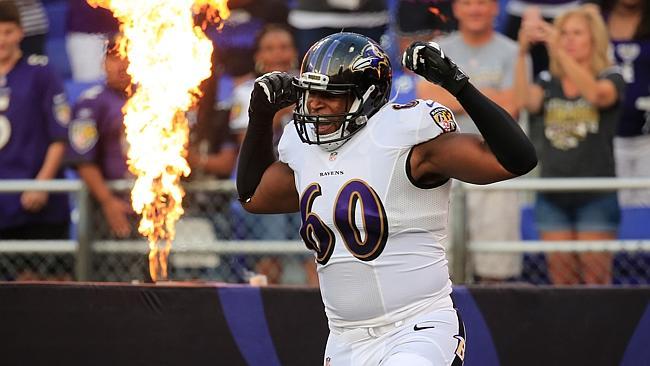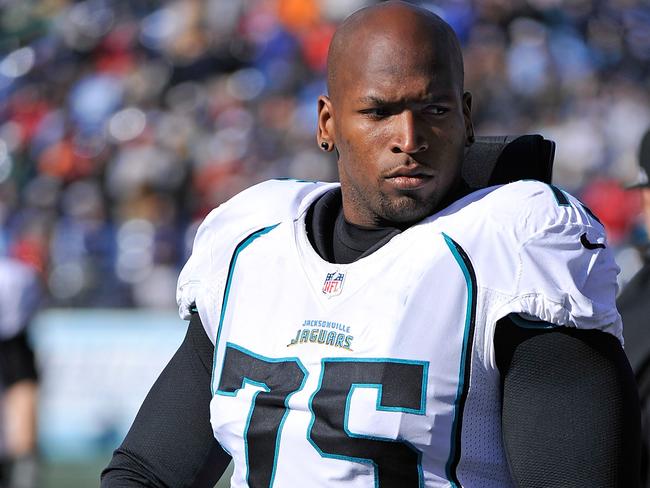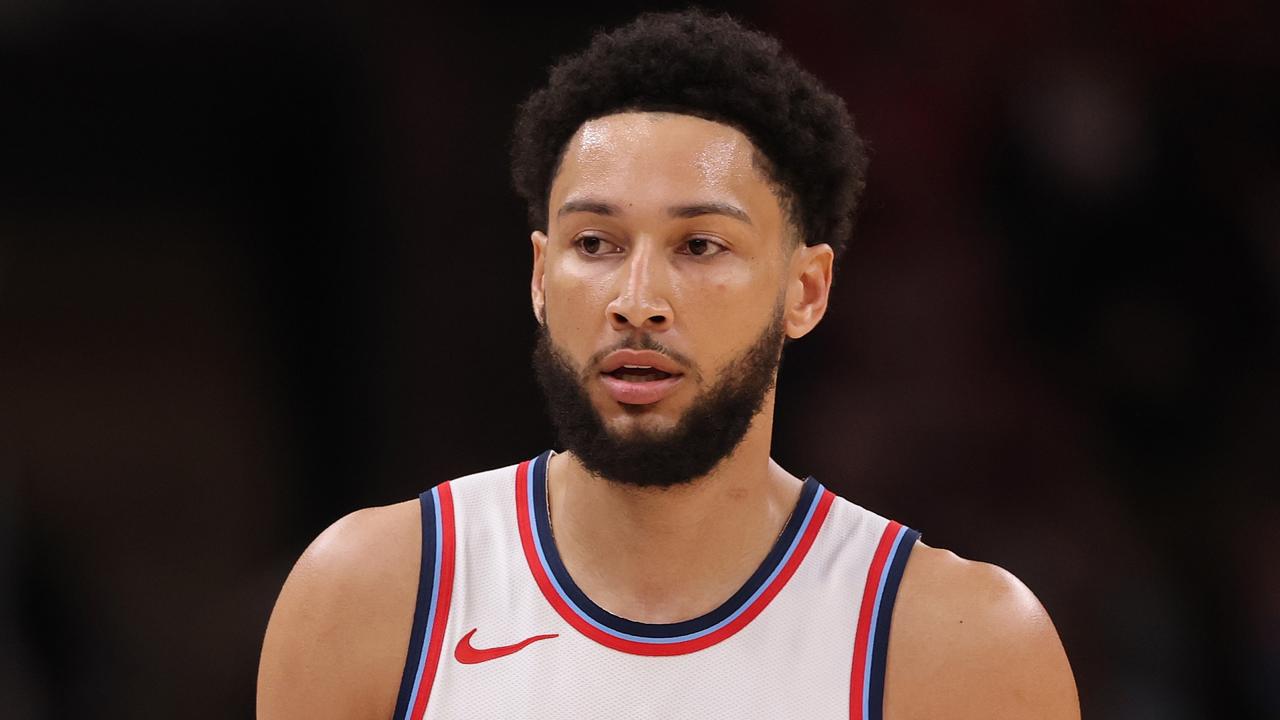The problem of prescription painkiller addiction in the NFL
THE problem of prescription drug abuse among high-level athletes is all too common, and is leading some into a dark, downward spiral.

American Sports
Don't miss out on the headlines from American Sports. Followed categories will be added to My News.
AS ONE of the most brutally physical sports in the world, the forces under which NFL athletes are subjected makes injury a regular occurrence.
How then do they manage to maintain their supreme level of performance throughout a 17-week regular season? According to Baltimore Ravens offensive tackle Eugene Monroe, there are a plethora of prescription drugs involved.
The 29-year-old penned a passionate letter in the Players Tribune entitled “Getting off the T Train”, in which he described the concerning overuse of the painkiller Toradol behind the closed change room doors of the US’s biggest football league.
“I play for the Baltimore Ravens, and if we’re at home (game) there’s a small office sectioned off from the training room in M&T Bank Stadium that we use,” Monroe said.
“If we’re on the road, the visiting locker rooms don’t usually have sufficient space, so we just go to a corner of the training room. The T Train is nothing more than a bunch of really large guys waiting to pull their pants down to get shot in the butt with Toradol, a powerful painkiller that will help them make it through the game and its aftermath.”
Monroe said the use of painkillers, or opioids, as a preventative masking agent to pain is one of the most commonly used injury management protocols among players both at the college and NFL levels — he estimates 50 per cent of NFL players are using or have used pain medication during their career to manage injury.
And their usage doesn’t stop once there career does. The Raven said the misuse of these drugs continued at an alarming rate long into the retirement of seasoned former athletes.

While the use of prescription painkillers is not uncommon in professional sport, Monroe said the effects of such regular use of drugs like Toradol have had a severe negative impact on players. Playing while under the influence of prescription medication can prevent injuries from being picked up when they first occur, before they exacerbate.
“Some guys don’t feel any pain for two days. Of course, that’s the point of these drugs — they block out the pain and reduce inflammation. But they also temporarily mask injury. That’s not a good thing if you get hurt during a game — you might need to address your injuries right away. But you feel nothing, so you do nothing,” Monroe said.
The increased risk of injuries worsening as a result of late detection due to opioids poses a serious issue for athletes who are entirely dependent on their bodies for their pay cheque, however Monroe says there is a much larger issue afoot.

The long-term impact of the overuse of opioid drugs is the risk of falling into the downward spiral of dependency and addiction.
For the 2009 round one draft pick, that reality is far too close to home.
“I got a call recently from an old teammate at the University of Virginia who told me that one of our former UVA teammates — a guy who was a few years ahead of me and who mentored me before going on to play in the NFL — had gotten addicted to pain pills and had essentially vanished,” he said.
“He has left his home for the streets and is now addicted to heroin. My heart is broken for him and his family.”
To expect the use of pain medication in professional sport to cease entirely would be unrealistic — with the risk of injury comes the need for players to ease the suffering as quickly as possible. Monroe poses a direct alternative to addictive opioids — the use of medical marijuana, or cannabinoids.
According to the offensive tackle, “it is safer, less addictive and can even reduce opioid dependence”. He also cited that it had the ability to protect the brain from injury or degeneration. And as the first active NFL player to openly advocate the use of cannabinoids in his sport, he has done his fair share of research on the topic.
Currently, marijuana of any kind is on the banned substances list and illegal for use in the NFL — 19 players were suspended from the league last season for its use.
Monroe believes that is something that needs to be changed urgently.
“Every NFL player rides the T Train at some point in his career. But we need to be able to get off. The NFL should explore every means available to safely treat chronic pain and traumatic head injuries. And that means that the league needs to take a long, hard look at the benefits of medical marijuana,” he said.
Originally published as The problem of prescription painkiller addiction in the NFL


